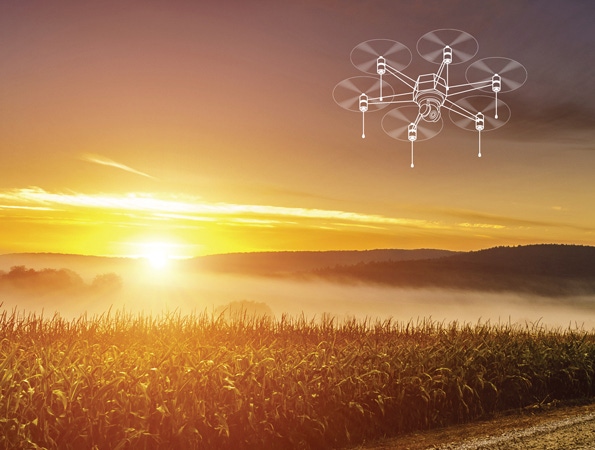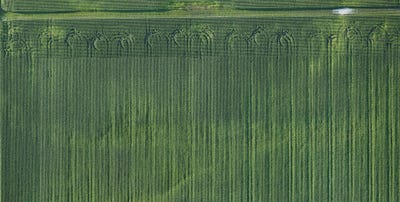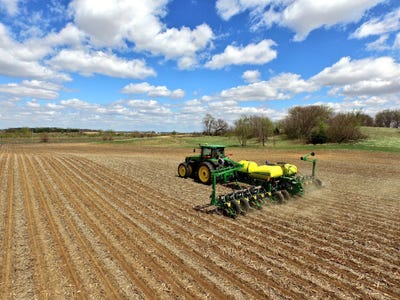
Drones for ag: We’re moving ahead
Call them what you will – drones, unmanned aerial systems (UAS), unmanned aerial vehicles (UAV) – this innovative technology has caused waves of excitement in agriculture in the past few years, and FAA has picked up the pace on establishing guidelines for use.

2015 and 2016 could be when drones really start to take off in agriculture. At least that’s what a lot of those active in the drone community have been saying.
“There is a lot of excitement around the world about this technology in agriculture use and for good reason,” says Chad Colby, a UAS consultant who’s become widely known in agriculture circles through his talks at UAS conferences around the country. “I’ve witnessed so many changes over the past three years,” he says. “Today, we are moving toward the fact that these will be another tool in the farmer’s toolbox.”
So just what are those major changes that have caused a lot of moving and shaking in agriculture and from the FAA in the past couple years? Here’s a timeline to help you get caught up:
February 2012: FAA Modernization and Reform Act
This put into motion a requirement that FAA would address a safe integration of UAS through a five-year roadmap.
November 2013: Roadmap announced
The roadmap is released for integrating UAS into the nation’s airspace, ensuring FAA supports widespread use of UAS, with a goal of establishing requirements for operators.
December 2013: Test sites announced
FAA announces that six states win the bid for official UAS testing sites. The sites allow for testing of UAS in controlled environments to gather data on how different UAVs perform. The states where testing is taking place include Virginia, Nevada, Texas, New York, Alaska and North Dakota.
February 2015: Small UAS (sUAS) rules, comment period
FAA proposes regulations that would allow for regular use of sUAS (under 55 lbs), including safety rules for non-recreational operations. Commenting closed in April 2015. This move is significant for agriculture because most UAVs used for ag fall in the sUAS category. Comments are still being reviewed, and FAA says it will publish its official rules by June 17, 2016.
May 2015: FAA expands sUAS horizons
FAA announces partnerships through its Pathfinder Initiative to explore the next steps for UAS operation beyond what was proposed for sUAS in February. Most important to agriculture is the extended visual line-of-sight operations testing that will be done in rural areas. UAV maker PrecisionHawk is announced as a partner. Thomas Haun, PrecisionHawk VP of strategy, said through the partnership they want to push the proposed rules to allow users to operate beyond line of sight. “We believe this will unlock significant value in ag – keeping the UAV in the air for a significant time would create tremendous amount of value,” he says.
Measuring ROI
We’ve heard of the benefits of drones in ag: speeding up crop scouting, identifying pest or nutrient issues in crops and addressing them right away, checking for weather damage, finding pivot breakdowns on irrigation systems, checking drainage system performance – the list goes on. (Search “Take to the sky” on FarmIndustryNews.com to read the original article from 2013 on the details of drone technology and benefits of use.) But how do these things help growers justify the cost of purchasing a drone in the first place?

This RBG photo of corn field in central Illinois from last month can tell a big story to a grower who knows his or her fields, and it’s a way to take action in season when deficiencies can be located and fixed right away. Photo: Chad Colby
The American Farm Bureau released its findings last month on a study calculating the return on investment that drones for agriculture can provide growers. They looked at using drones for crop scouting, crop insurance and 3D terrain mapping. In partnership with Informa Economics, and Drone as a Service (measure32.com) the created an ROI Calculator to measure drone usage ROI. When measuring the return gained through enhanced crop scouting, for example, ROI is $12 per acre for corn, $2.60 per acre for soybeans, and $2.30 per acre for wheat. The ROI Calculator used to measure this will soon be available for farmers and service providers online.
While this is one specific example, and the types of drones available and the field conditions in which they operate vary widely, it’s a solid case showing how drone usage can pay off.
Colby spoke at this year’s InfoAg precision ag conference last month in St. Louis to a packed room of growers and precision ag professionals and one of his key messages was that you do not have to spend a lot of money to get a useful UAS package.
“You don’t need to spend big money to get a great ship for ag use. You can spend $1000 to $2000 depending on extras, additional batteries, a case, etc. And they are reliable. If operated correctly these ships are very good tools that work very well,” he says. Compared to what’s spent on some other farm inputs, that’s pretty cheap. And the type of imagery you get out of a system – like basic RBG photos – can tell you a lot about your fields. Colby notes that a 4th generation farmer is going to know what he or she sees when shown an image of a field with noticeable yellow strips showing a deficiency in their corn. NDVI (Normalized Difference Vegetation Index) imagery takes it a step further by indicating density but may require working with a service provider to get real meaning out of the process.
What you can do with a drone right now
Let’s face it: Drones represent some very innovative technology; it’s neat to see farming from a different perspective; and they’re also simply fun to fly.
“I’ve been known to get sunburnt tonsils from a day of watching them in the sky,” said Kevin Price, Executive VP of Research and technology development, AgPixel/RoboFlight Systems, at his drone session at InfoAg.
Plenty of farmers are flying drones for recreation on their farms right now. The drone sessions at InfoAg were packed to the brim with attendees, and lots of people shot their hands up when asked if they were operating a drone on their farms now.

Viewing your equipment from an aerial angle and sharing photos and footage on social media are some of the ways growers have used drones to tell the story of agriculture. Photo: Chad Colby
Many are capturing aerial footage during planting, harvest and more, and sharing that on YouTube and other social media channels. (Search “YouTube drones” on FarmIndustryNews.com for a roundup of those called “Viewing farming from a new angle for 2014.”) Colby notes that this alone – farmers sharing recreational drone footage on social media – is in itself a great way for growers to share the story of agriculture with a broad audience.
But if you have one or plan to get one soon, you have to know the rules. If flying recreationally, adhere to the rules established like keeping your aircraft within visual line of site, flying no higher than 400 feet and avoiding adverse weather conditions. Visit http://knowbeforeyoufly.org/for-recreational-users for a full list and consider joining an organization like the Academy of Model Aeronautics, which promotes safe flying of small aircraft.
Flying commercially is a different story and right now requires a Section 333 exemption from FAA.
Peggy Hall, assistant professor, field specialist, agricultural & resource law, said using your sUAS to check on your crops for scouting and identifying problems – that’s a business purpose, in a recent sUAS webinar hosted by the National Ag Law Center.
FAA has issued nearly 1,000 333 exemptions so far, and until they release the official rules of operation for sUAS for commercial purposes next year, flying one for business, and making money off of it in any way, requires that exemption.
The future looks bright for drone use in agriculture, but giving the technology a try for fun right now is also a reality. And the conversation doesn’t end here: Visit farmindustrynews.com for even more coverage, an interactive quiz to test your drone knowledge, galleries, blogs and more around the topic.
Resources
Know Before you Fly
Ag Tech Talk
(There is also a comprehensive list of drone manufacturers here)
FAA 333 exemptions
faa.gov/uas/legislative_programs/section_333
UAS overview
Academy of Model Aeronautics
Association for Unmanned Vehicle Systems International
Like what you’re reading? Subscribe to Farm Industry News Now e-newsletter to get the latest news and more straight to your inbox twice weekly.
About the Author(s)
You May Also Like





